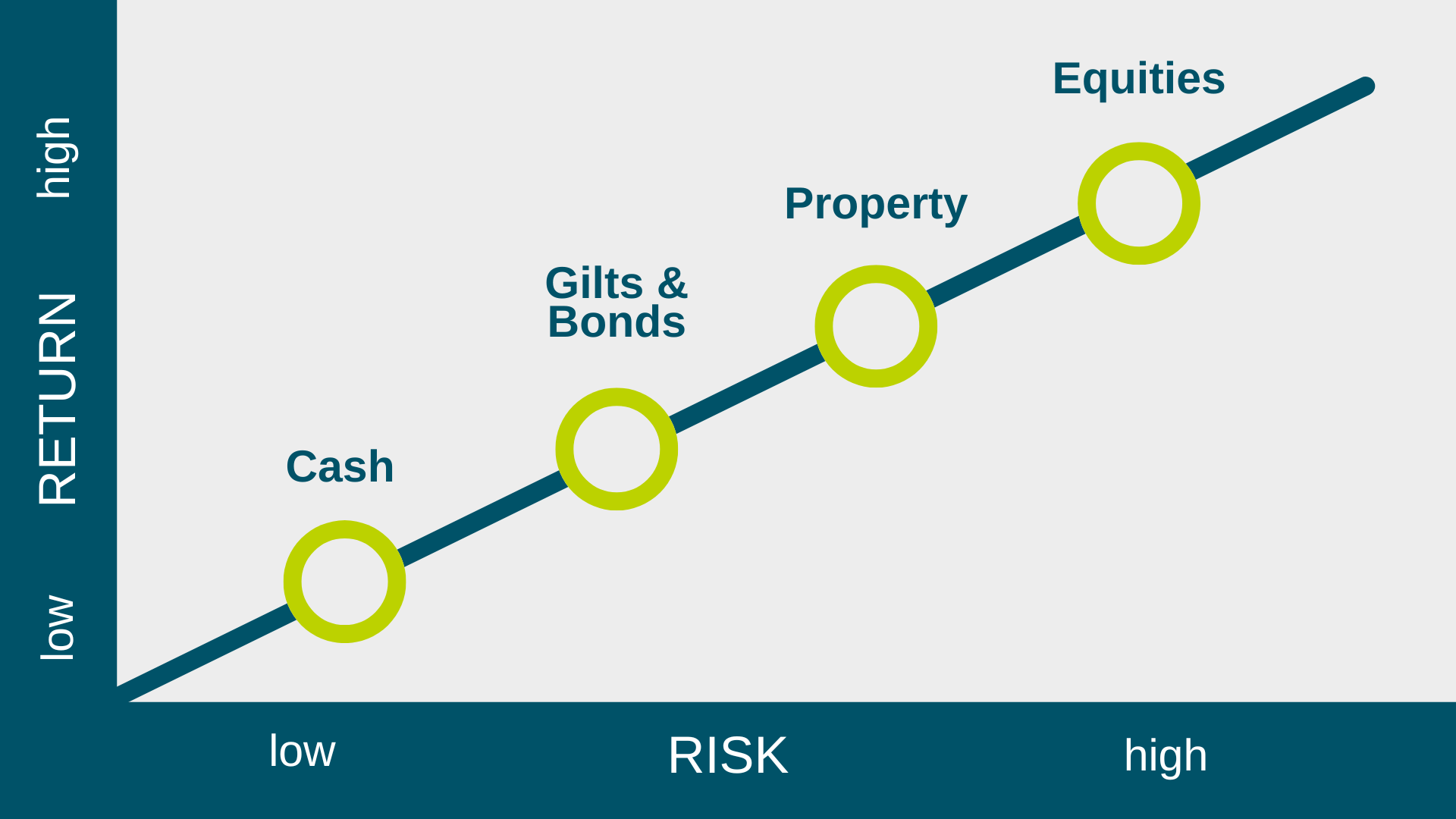Your Pension Account is invested with the aim for it to grow, at least in line with inflation, but hopefully by more.
Investments are a balance between risk and reward. Riskier assets tend to go up and down in value more, whereas less risky assets are more stable. But you invest pension savings over the long term, so short term changes may not be important.
It is a good idea to look at our online fund information and factsheets to compare long term performance, and understand what assets are included in each fund.
Trustee's role in investment fund selection
The Trustee selects and regularly reviews the investment funds, looking at the fees and performance of each fund, compared to benchmarks (their expected performance).
Equities are shares in a company. They tend to outperform less risky investments, like cash and bonds, over the longer term. They may be suitable if you’re a long way from retirement, to make the most of potentially higher returns whilst allowing time to recover if they go down in value.
Equity funds are often split between different geographic locations, sectors or industries, to spread risk. Funds can have different characteristics and level of risk, and are generally split between:
- Developed markets: Economically developed countries, generally less risky.
- Emerging markets: Less economically developed and more risky, but may offer greater potential for growth as the economies grow.
Gilts or bonds are a way of lending money to companies or governments, for a set period of time and agreed return rate. They can pay a steady income but don’t normally offer high returns, so are less risky than equities.
Cash is less risky than equities and gilts/bonds, and doesn’t offer high returns. Cash can go down in value if charges are more than interest rates (possible when rates are low), and may not keep up with the increase in the cost of living (inflation).
Property funds either invest directly in commercial property (offices, factories, warehouses, retail space) or by buying shares in property companies or other property funds. Investments can pay rent and can go up and down in value. Property funds are less risky than equities but more risky than gilts/bonds. It can be difficult to value or sell property investments so it may be harder to access your money.

Risk and reward
It is a fine balance between taking enough risk to help your money grow, but not too much that you feel uncomfortable.
The risk that your investments can fall at the wrong time. A very risky (or volatile) investment can give high returns and even greater losses. A less volatile investment can offer security but with a trade-off of lower returns. How much risk or volatility you are comfortable with may depend on whether you have enough time before you retire to recover from losses.
The risk that your investment returns are lower than inflation, so that the ‘real’ value of your investments goes down, i.e. you might not be able to buy as much for your money in the future.
The risk that your investments will buy a lower annuity (lifetime income) when you retire. This can happen when the value of your investments moves in a different way to the price of annuities. To protect against this, you can move your savings to investments that move in the same way as annuity prices. This can be done automatically as you get closer to retirement (known as lifestyling).
The risk that you live longer than expected and haven’t saved enough. An annuity protects against this as it is paid for rest of your life, but it can be expensive as the insurance company takes on the longevity risk. If you are drawing income directly from your Pension Account (drawdown) you must think about how long you might live for, so you can be confident you have enough money to last.
Other sources of income or savings
Some people have other savings or income to use in retirement. The more you have elsewhere, the more comfortable you may be when taking risks with your investments.
Spreading investment to reduce risk
Spreading your money between different investments that could behave in different ways is known as diversification. Hopefully, if one fund performs badly, not all your savings are affected. Diversification can reduce risk, but it won’t remove it altogether.

